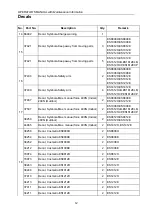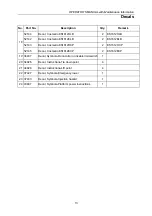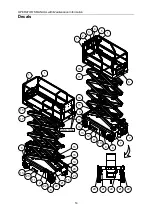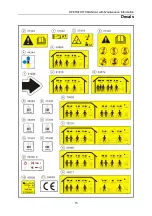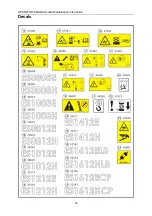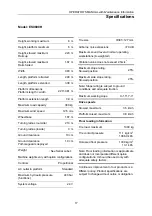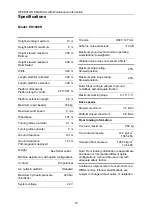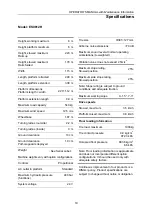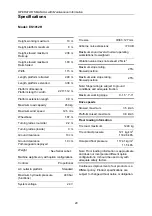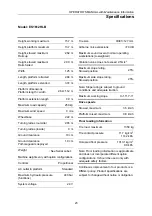
OPERATOR’S MANUAL
with Maintenance Information
Safety Rules
8
Rinse eyes or skin splashed with acid using
plenty of clean water and consult a doctor
immediately. Wash clothing contaminated with
acid with plenty of water.
Explosion Hazard
Keep sparks, flames and lighted tobacco away
from batteries. Batteries emit explosive gas.
Avoid fire and risk of explosion caused by
short circuits.
The battery tray should remain open during the
entire charging cycle.
Do not contact the battery terminals or the
cable clamps with tools that may cause
sparks.
Component Damage Hazard
Do not use any battery charger greater than
24V to charge the batteries.
Pressure relief valves are used as breathable
plugs. If open the pressure relief valves, the
battery will be destroyed.
The battery must always be kept clean and dry
in order to prevent leakage currents. Do not
rinse with water or wipe with a wet towel.
Please do not change the location of the
battery, and cannot be inverted. Do not block
the vent hole of safety valve when placing.
The series/parallel connection must be
approved by Dingli. Only accessories
approved by Dingli can be used for connection
of battery blocks.
Electrocution/ Burn Hazard
Connect the battery charger to
a grounded, AC 3-wire
electrical outlet only.
Inspect daily for damaged cords, cables and
wires. Replace damaged items before
operating.
Metallic parts of the battery cells are always
electriferous. Therefore, no foreign objects or
tools may be placed on the batteries.
Avoid electrical shock from contact with
battery terminals. Remove all rings, watches
and other jewelry.
Tip-over Hazard
Do not use batteries that weigh less than the
original equipment. Batteries are used as
counterweight and are critical to machine
stability. Each battery must weigh 28 kg. The
batteries must weigh a minimum of 112 kg.
(For ES0808H/E, ES1008H/E, ES0812H/E,
ES1012H/E); Each battery must weigh 30 kg.
The batteries must weigh a minimum of 120 kg
(For ES1212H/E); Each battery must weigh 37
kg. The batteries must weigh a minimum of
148 kg (For ES1412H/E, ES1612HLB/ELB,
ES1612HCP/ECP).
Lifting Hazard
Use the appropriate number of people and
proper lifting techniques when lifting batteries.
Lifting hooks must not cause any damage to
cells, connectors or connecting cables.
Environmental Hazard
30°C battery temperature is considered the
rated temperature. Higher temperatures
reduce the service life, while lower
temperatures reduce the available
capacity.45°C is the upper limit temperature
and is not permissible as an operating
temperature.
Batteries must not be exposed to sunlight
without protection.

















